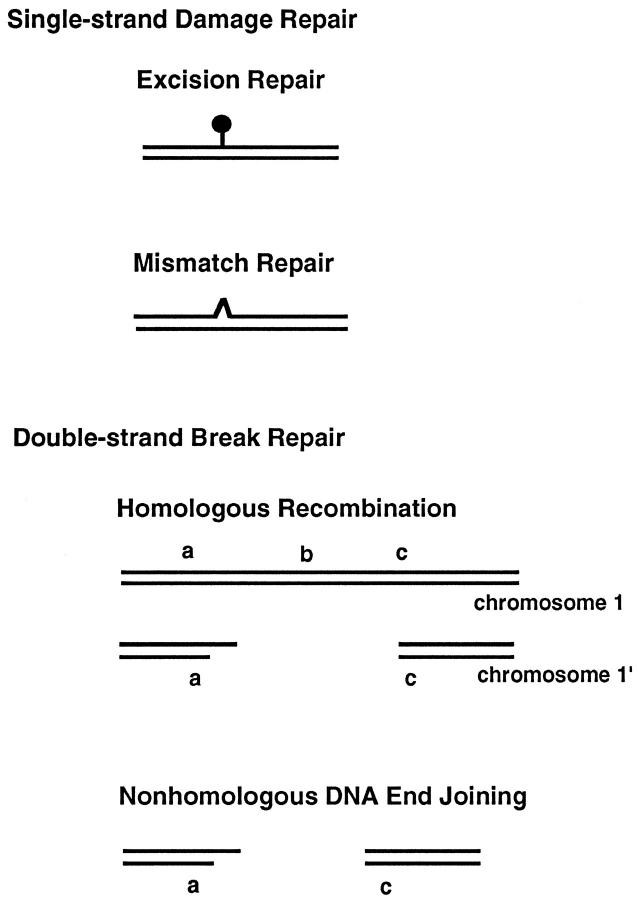Figure 1.
Diagrams of the major categories of DNA damage. DNA can be damaged on one strand (single-strand damage) or both strands (double-strand damage). Damage due to single-strand breaks or alkylation events are handled by excision repair (nucleotide and base excision pathways). Mismatches from DNA replication are handled by the mismatch repair system. Double-strand breaks are repaired by either homologous recombination (HR) or nonhomologous DNA end joining (NHEJ). In HR, the information at b is copied from the intact chromosome such that the sequence information a-b-c is restored; this process requires at least a 2N (diploid) DNA content. In NHEJ, even though the cell is diploid, a is joined directly to c, leaving the information at b deleted from the chromosome.

